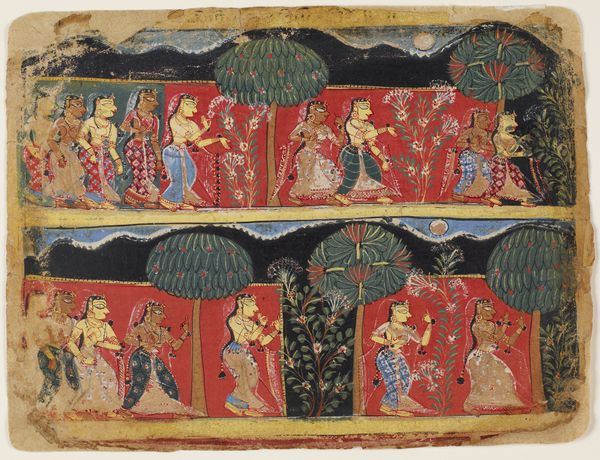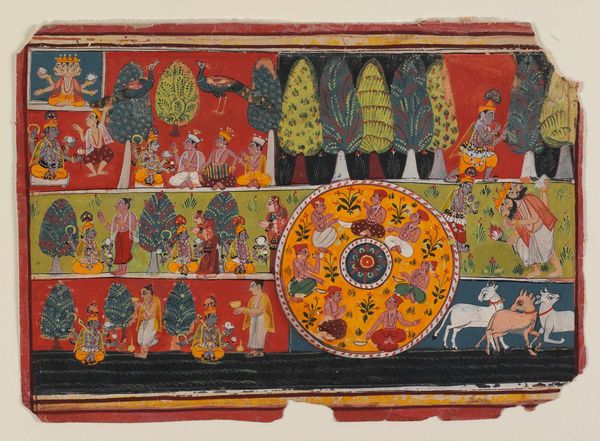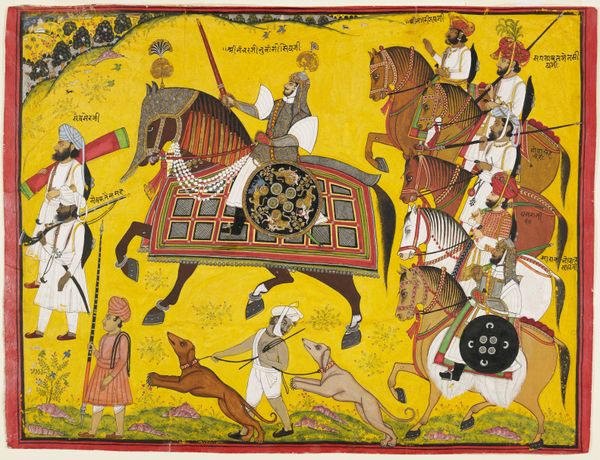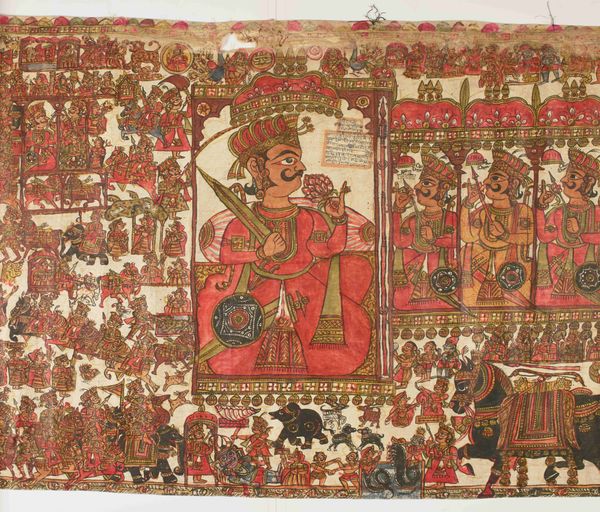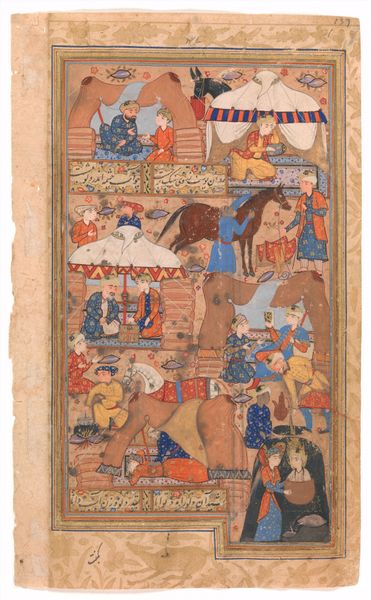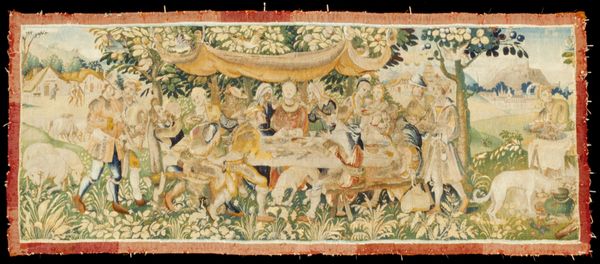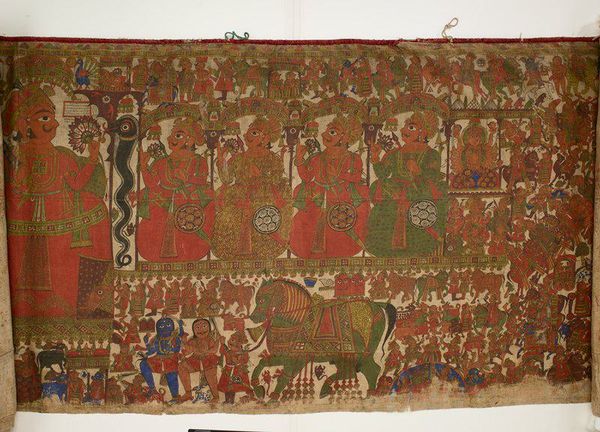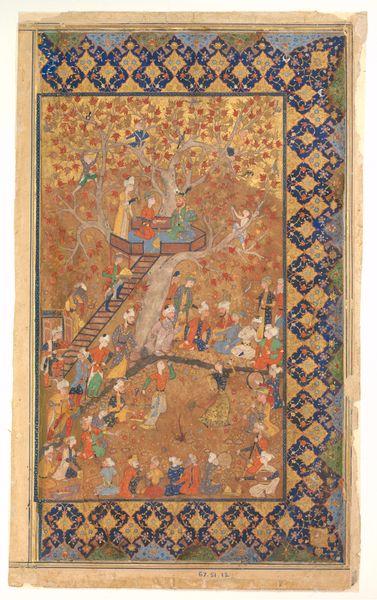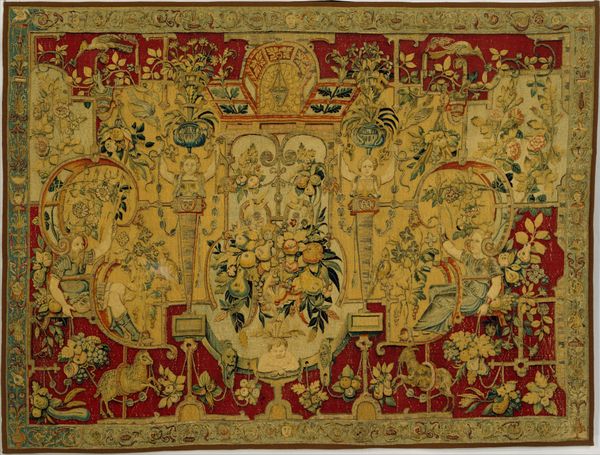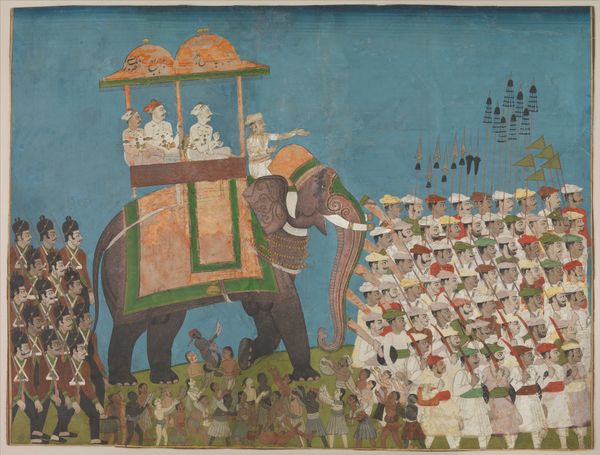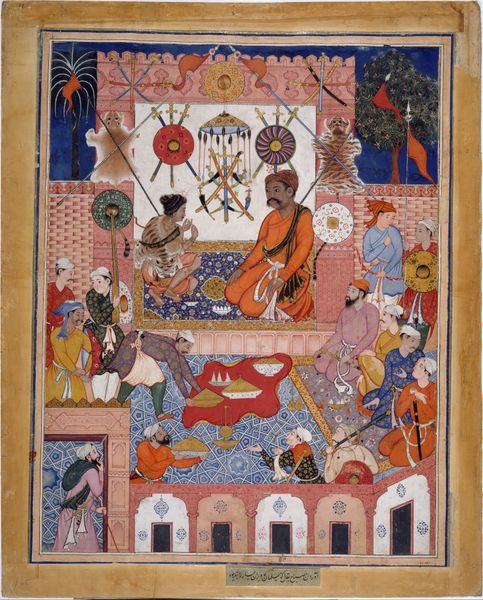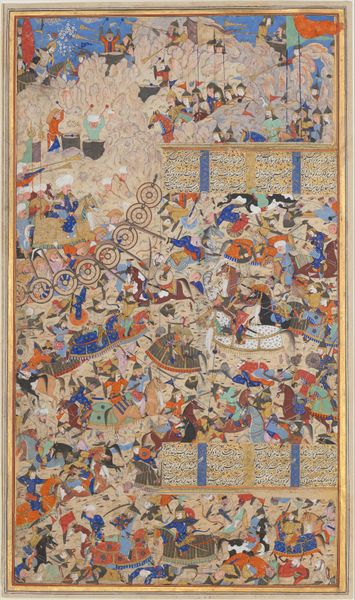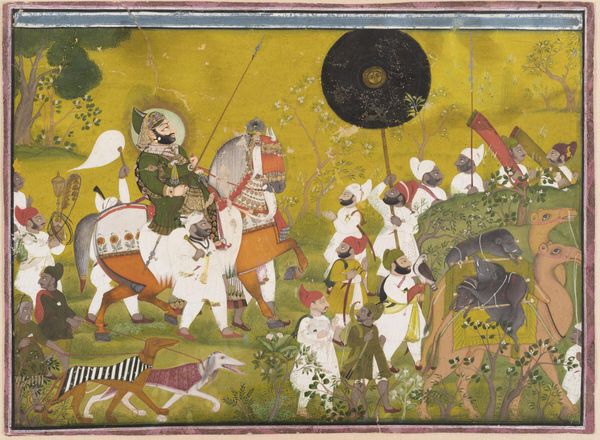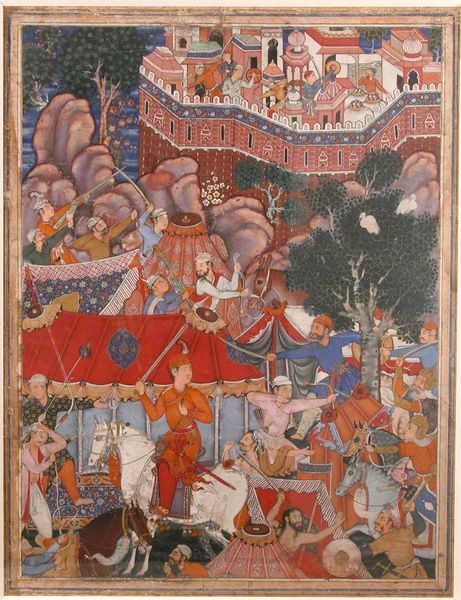
Krishna and the Kshatriya Maidens Proceed to Dvaraka: page from a Bhagavata Purana series 1510 - 1540
0:00
0:00
painting, watercolor
#
water colours
#
narrative-art
#
painting
#
asian-art
#
figuration
#
watercolor
#
miniature
Dimensions: Image: 6 3/4 in. × 9 in. (17.1 × 22.9 cm) Sheet: 7 in. × 9 3/8 in. (17.8 × 23.8 cm)
Copyright: Public Domain
Curator: This vibrant watercolor piece, "Krishna and the Kshatriya Maidens Proceed to Dvaraka," originates from a Bhagavata Purana series and dates roughly between 1510 and 1540. Editor: My initial impression is one of buoyant energy! There's so much activity crammed into a small space. The use of color feels symbolic too. Curator: It does depict quite the procession! This work exemplifies early Rajasthani painting. The scene illustrates a specific narrative from the Bhagavata Purana, showing Krishna escorting liberated maidens. It reveals much about contemporaneous ritual. Editor: Notice the layering – a bustling throng carrying something elaborate overhead, above Krishna in his chariot below with more people, elephants and equines trailing. Is the layering of characters on different horizontal planes of socio-cultural relevance here? Curator: The registers certainly create a sense of depth and importance, prioritizing Krishna as the divine protagonist at the focal point. Consider, too, the stylized landscape, not realistic, but coded to signify divinity and royal procession. This connects the imagery to deeper cultural concepts of piety and governance. Editor: Those canopy bearers appear burdened, yes? Though dressed with ornate turbans and such. Perhaps there's an element of coerced labour visible. The artist uses a flattened perspective and intense colors which creates this almost frenetic feeling—perhaps reflective of the times, and society as a whole. It would be good to know how this work reached its present home. Curator: A fascinating reading, certainly! The painting currently resides here at The Metropolitan Museum of Art. It provides enduring access to narratives and social life in early modern India and helps contextualize evolving social mores. Editor: Well, after our exchange, I leave with a better appreciation for its layers—literally and figuratively— and, as a cultural artifact, its unique insight into the complex historical setting that formed its creation and afterlife. Curator: I wholeheartedly agree! The power of such pieces lies not only in their artistic value but also in their rich tapestry of symbolic, historic meaning available for audiences today.
Comments
No comments
Be the first to comment and join the conversation on the ultimate creative platform.
